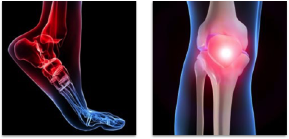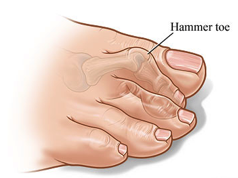
Jordi Sanchez-Ballester
FRCSEd FRCS Trauma & Orth
Consultant Foot, Ankle & Knee Surgeon
Fairfield Independent Hospital, St Helens
Spire Cheshire, Whiston & St Helens Hospitals
Bone-Surgeon.co.uk
Fairfield Independent Hospital
Crank Rd
St Helens
Merseyside WA11 7RS
01744 739311
Spire Cheshire Hospital
Chris Davies
Fir Tree Close
Warrington WA4 4LU
0845 602 2500

How Do Feet & Ankles Work?
Our feet are made up of 26 bones and more than 33 joints arranged in columns and arches that vary in stiffness and flexibility. Many common problems can occur in this complicated area.
The foot is usually separated into three different parts :
The back of your foot (hindfoot) is made up of your heel bone (calcaneus) and your ankle (talus). They’re joined together by your subtalar joint, which allows your foot to move from side to side.
Your ankle bone is joined to your leg bones (tibia and fibula) at your ankle joint, which acts like a hinge. This allows your foot to bend up and down.
The middle of your foot (midfoot) is made up of five tarsal bones. These form the arch of your foot. Your tarsal bones are connected to the front and back of your foot by muscles and the arch ligament (the plantar fascia). They act as shock absorbers when we’re walking or running.
The front of your foot (forefoot) is made up of your toe bones (phalanges), which are connected to five long bones (metatarsals) by joints. The joints in your toes don’t move very much. Your forefoot takes half of your body’s weight.
The muscles in your lower leg are attached to bones in your feet by tendons, and they control movement that allows us to stand, walk, go on tiptoes and jump.
These muscles move your toes and control the position of your foot as it hits the ground, allowing it to become flexible and cushioning the impact. They also make the arches of your feet more rigid to push your body forward when you move.
Your heel bone is connected to the calf muscles in your lower leg by your Achilles tendon, which is the most important tendon for movement. The tibialis posterior tendon, which attaches the underside of your foot to your lower leg, helps supports the arch of your foot and allows you to turn it inward.
The main nerve of your foot controls the muscles in your sole and gives feeling here and to your toes. Other nerves give feeling to the top and outside edge of your foot.

